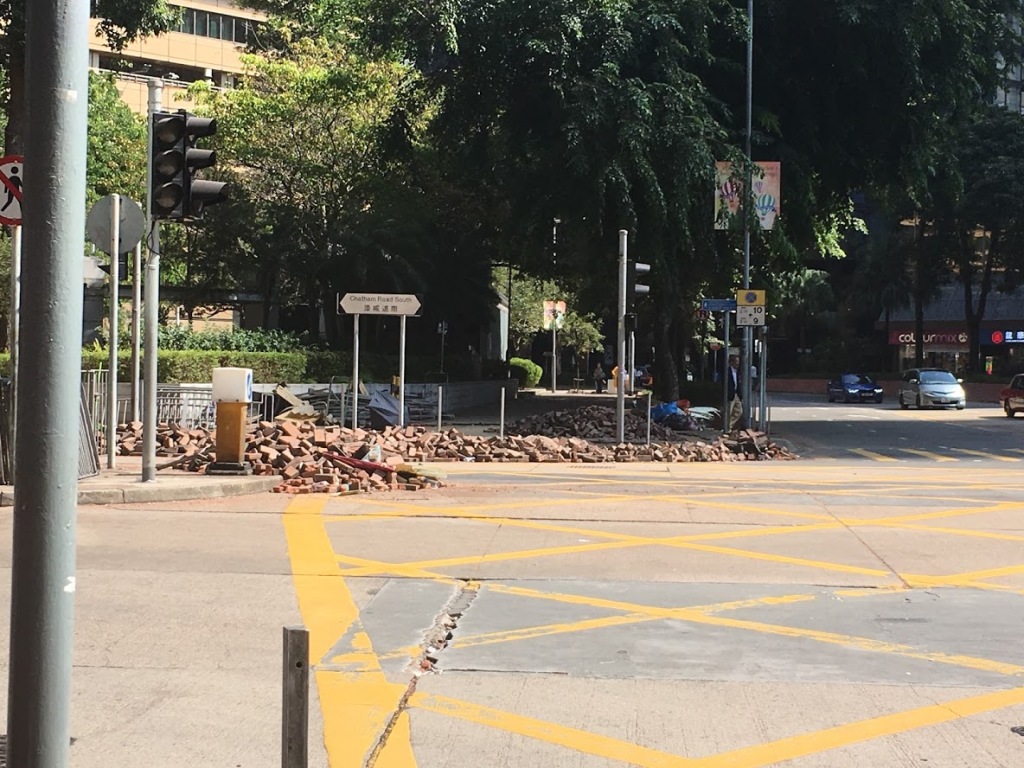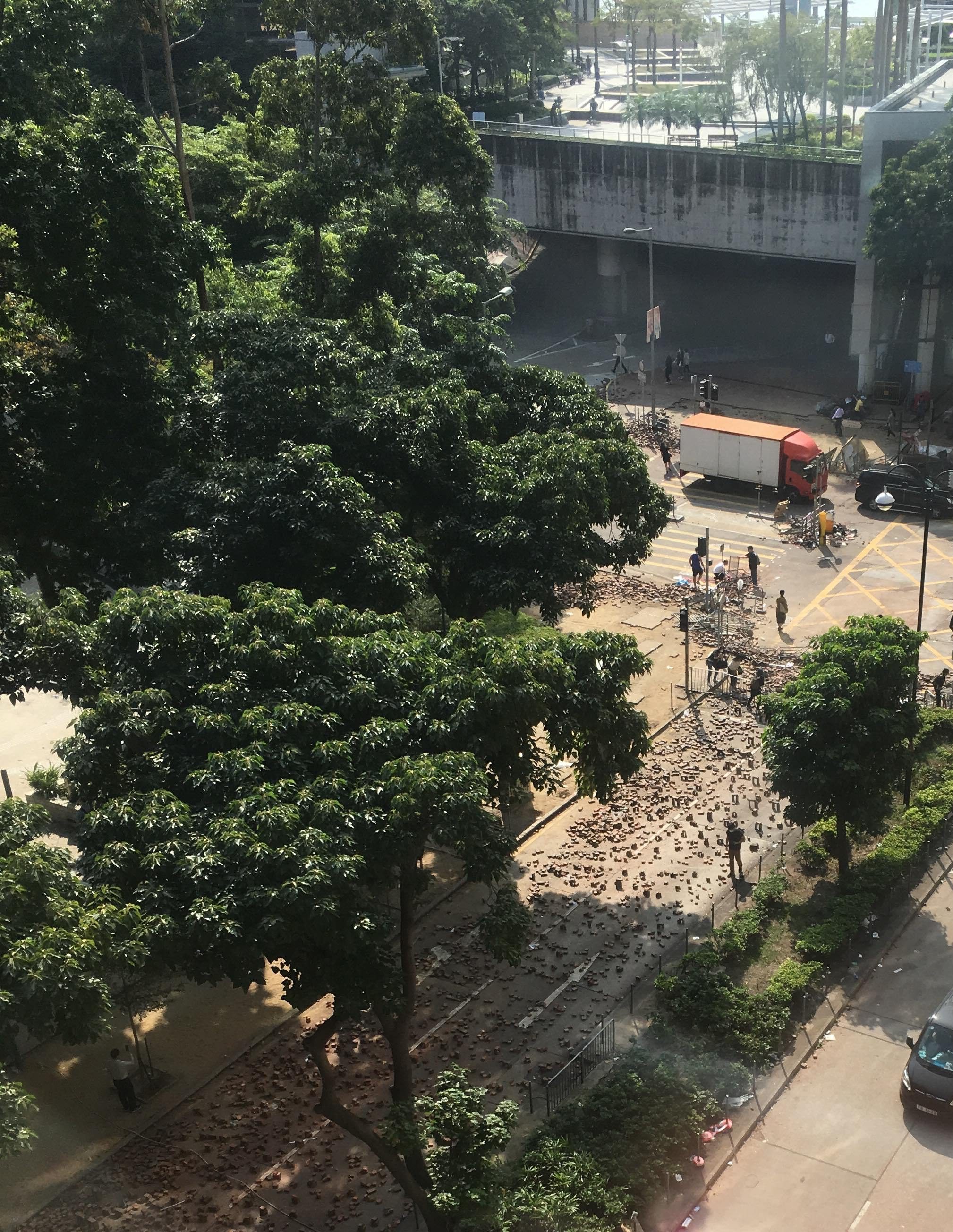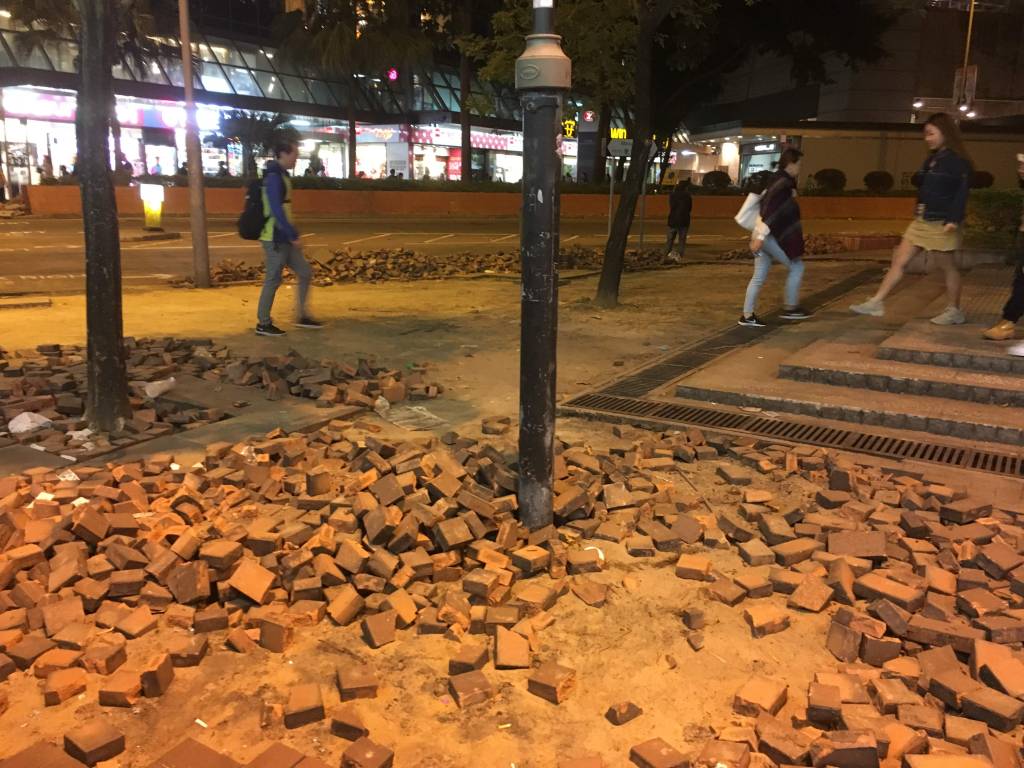The sound of glass shattering. Bricks being smashed. Police and ambulance sirens blasting. Rubber bullets popping.
Those were the sounds of the most petrifying night I had ever spent in my apartment. And those were just sounds coming from my window.
Up till that Tuesday night in November, the protests had felt distant. If you were a Hong Kong citizen that planned your commutes well, you could ignore the protest. Nobody said you had to watch livestreams.
Born and raised in Hong Kong, I cared about my city and I would pay attention to the news. Since my family is from India, but my background as a third culture kid didn’t spark too much interest in politics. I could easily ignore what was happening in Hong Kong around the protests.
But this time it was happening right outside my window. I could hear the destruction. I could smell the tear gas. I could feel the fear.
I wasn’t going to the protests. The protests were coming to me.

Certainly you’d think a journalism students like me should’ve jumped at this opportunity to cover the chaos when offered a front row seat. But something held me back that night. Was it safety? Or did this event simply not fit my definition of story-worthy?
On Sunday night, I felt a glimmer of hope watching Hongkongers clean up bricks across the city that weekend. But as tensions heated up on Monday, I got nervous watching livestreams on my laptop. I watched the standoff between police and protestors at PolyU.
On Tuesday, at the very stroke of midnight, I heard bricks. But this time, they weren’t from my headphones. They were from my window. And I was absolutely terrified.
I rushed to our living room to see people pulling bricks out of the pavement and blocking Chatham Road. Since the PolyU entrances were blocked, the protestors were running in the direction of Tsim Sha Tsui, a bustling residential and shopping district of underground malls and nightlife – and my home.
I had trouble falling asleep as I listened to more bricks being removed. I could not guess their motive. They’d knocked over bus stands, smashed traffic lights and put up barricades near our building. Was our road a waiting spot until PolyU opened up to more protestors? Were they here to vandalize my building? And what would happen the next day?
The next morning, I woke up to the sounds of police vans. The police had brought helpers to push aside the bricks. However, the bricks were soon back on the streets when office workers came to protest during lunch.
But they didn’t just kick bricks back onto the street. They smashed our building’s fire alarm.
Anyone knows a fire alarm is a terribly annoying sound. But when the bricks block your street from firetrucks and the firemen can’t reach your building to fix the alarm, you’re forced to listen to the alarm blaring loudly for 30 minutes non-stop – it’s way worse.

I’m grateful for the silence in the afternoon. I took a nap to process what was happening but it wasn’t too long before the protestors woke me up in the evening shouting “enter Poly” in Cantonese.
I decided to distract myself by watching a movie.
Anybody knows the sequel to “The Father of the Bride” is an incredibly engaging film. But the intermittent yelling made me pause the film at least 15 times to see what was happening downstairs. Just as drama on my TV screen was developing itself emotionally, I paused to watch the competing film, a movie that was building its own plot on the streets below.

What followed was one of the most unique interpretations of a supply chain I had ever seen in my history of studying economics. The protestors had formed a long line and were passing objects like fire extinguishers and barricades along Chatham Road. The chain began at the East Tsim Sha Tsui station opening of the road and stretched all the way to PolyU.
The protestors had planned for police disruption by keeping a lookout. A watchman stood on a ladder keeping an eye out for the police as the supply chain continued.
I didn’t know if this watchman was to blame but it seems there were several false alarms. Shouting and crowds running in different directions at different times. The sounds reminded me of a Dolby Digital theatre – known for its 360-degree experience. My auditory receptors picked up snippets as I ran from one room to another in our apartment to keep tabs on what was happening.
The time finally came. Riot police were marching in their uniforms. The watchman had informed his protestor friends. Everyone was running in different directions. But I didn’t hear any yelling.
Pop goes the bullet.
The sound of a rubber bullet pop was a familiar one I’d heard on the news but this time it felt louder than normal.
“Ah, it’s probably one of my dad’s big speakers. He loves watching action movies,” I told myself.
And then the stench kicked in. I could feel it in my nose. I could feel it in my throat. And before you know it, my mom yelled, “Tear gas! Shut the windows!”
Later into the night, I noticed fires at a bus terminus near our street. Then a police water cannon came in. What followed was a standoff between riot police and students. Umbrellas on one side and police shields on the other.
After the protestors retreated, I stayed home for few days until our neighborhood became calm. But it took a while for me to become calm after seeing everything that had happened.
This was no ordinary event in this long timeline of protests. I grew up in this district with my parents. I had friends and family just a few blocks away. Some of the parks and landmarks with my fondest childhood memories could get torn down. If someone started throwing bricks at our windows, one of my family members could get sent to the hospital.
On the other hand, you’d expect a journalism student to jump at the opportunity to report on such an event outside their window, but I couldn’t get myself to leave the house.
The conflict with my parents about safety concerns was a small one, in comparison to the inner conflict with myself about the stories I believe in telling.
It’s easy to pick up on elements of conflict and destruction in society. It’s covered anytime, anyplace. It’s also easy for this kind of story to go viral on social media because of how such news spreads. But is that the perfect piece for your CV? I don’t know.
But what I do know is that I picked journalism school to become a storyteller. And I want to tell stories that inspire.
I believe in interviewing unsung heroes for their contributions to greater mankind. We should admire great acts of determination and leadership. There were events such as the human supply chain that displayed remarkable collaboration. I admired the one watchman keeping a lookout for so many people and the amount of courage he must’ve had to take on such a role. The amount of trust everyone must have had to pull off such an operation.
Sad to say, they were never mentioned in the coverage of PolyU.
That day, the overwhelming sequence of events being too close for comfort led me to put aside my journalism badge and prioritize safety. But it goes to show that should I ever be assigned to report on stories in a warzone, I know that I won’t be blinded by the reader count and the probability of my story going viral. I’ll always be on the lookout for the stories that inspire.
And I certainly hope other journalists understand that’s the kind of footage you want to be collecting if you can choose between a disaster-struck livestream or small snippets celebrating acts of heroism recorded right from your window.



